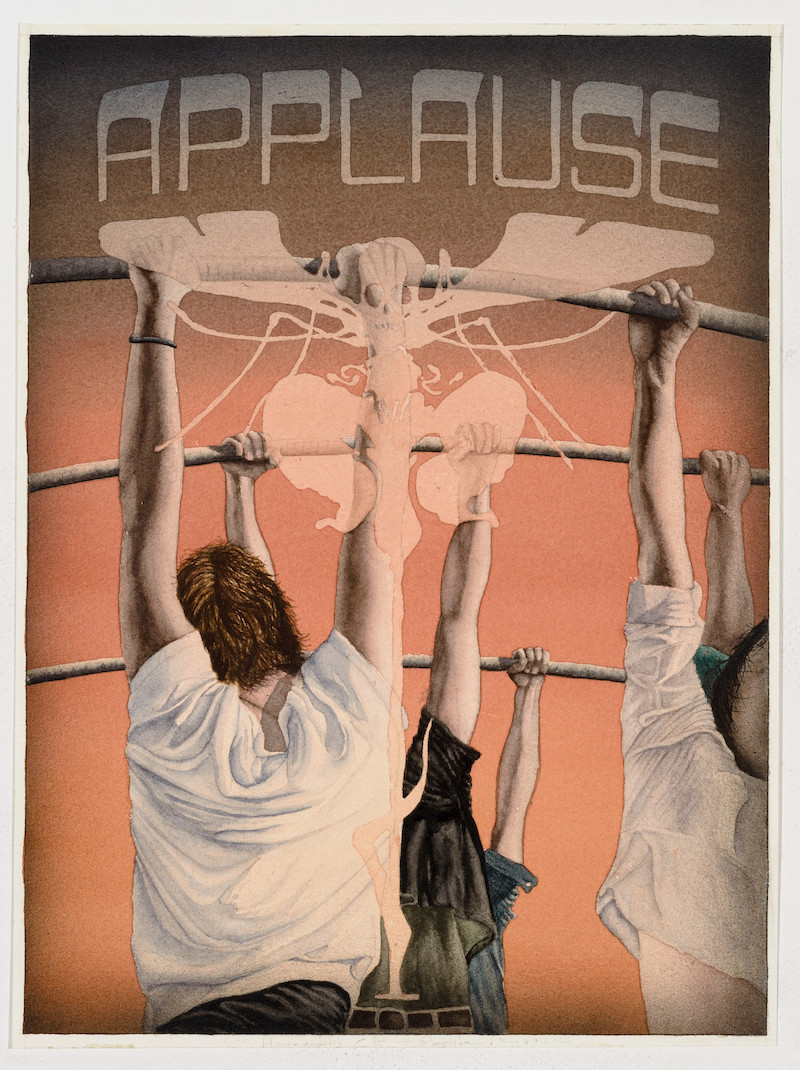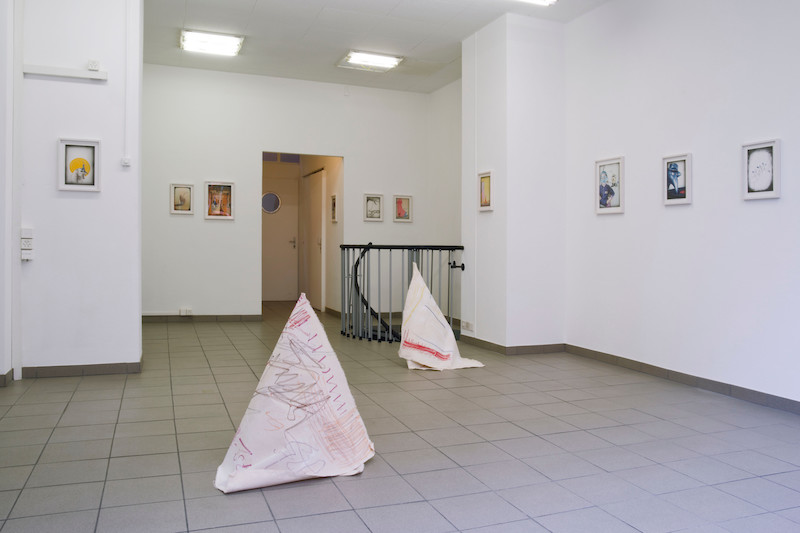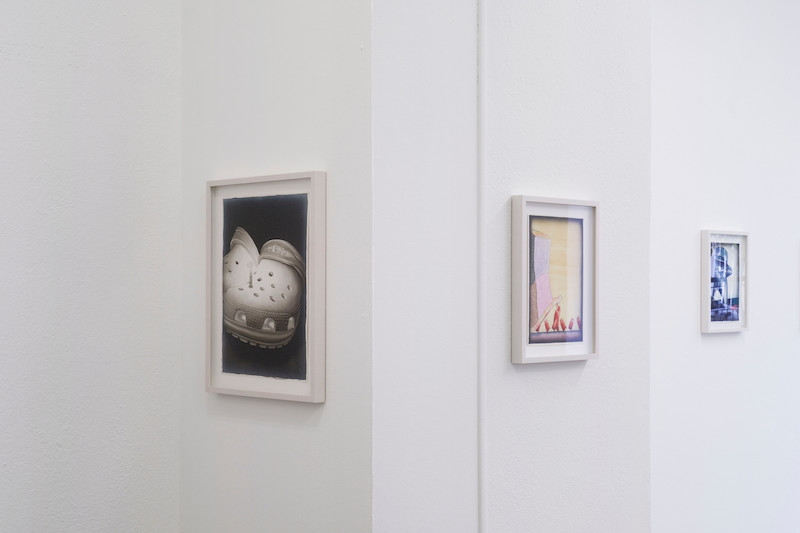Consisting of more than 80 ink and watercolors, each is a portrait of a person the artist has met (close or distant acquaintances, neighbors, other artists or friends children). Each intertwines personal and cultural references to take on the form of a visual riddle. These rebuses are illustrated with elements referring to the personal features of the person depicted, which could be obvious (for instance an artist’s artwork), or simply private and mundane anecdotes with hidden biographical elements. The original identity of the person is less important than the visual translation that the artist creates, going beyond the original subject. Thus, the People series itself is a relational platform that enables the artist to create a complex relationship with this large network of people.
As playful and emotional as they are sarcastic, these compositions are free to interpret and reveal broader universal dimensions and become a sort of proverb or aphorism. For example: a cute teddy bear hiding behind a mask (taken from “V for Vendetta” comics) refers to how one hides their real identity; a comparison between Francisco de Goya’s and Raymond Pettibon’s artworks to see “which one is the darkest” as a reference to human obsession with always finding the gloomiest. Another drawing expresses the complex compositions of our fragmented identities: here a local icon that became globalized (The New Yorker) becomes a nest for another local icon that remained local (the Swiss Migros grocery bag).
Moreover, this variation on the traditional portrait genre is part of an interrogation about identity throughout the artist’s twenty-five-year practice. Sup Kim’s view (whose name was recently changed to match the name he was given at birth) is informed by his environment and his biography. Born in Korea, raised by a North American mother and a European father, he was very quickly immersed in complex issues of differences and identities and had to develop singular strategies to represent the world. Both the styles and the visual references that the artist uses are merged to create a global syncretism from three continents: Asia, Europe and North America, escaping any notion of specific identity roots.
Thus, the People series itself is a relational platform that enables the artist to create a complex relationship with this large network of people. For example, the protocol prohibits portrayed people to acquire their own portraits, echoing our multifaced relations to others. On the other hand, the principle of the cryptic portrait embodies the fragmentation of our identities. This fragility and vulnerability are reinforced by the water based medium (ink and watercolor) on paper. If water is a symbol of life, wisdom and power, watercolor is one of the lightest and most delicate mediums for an artist to use.


















